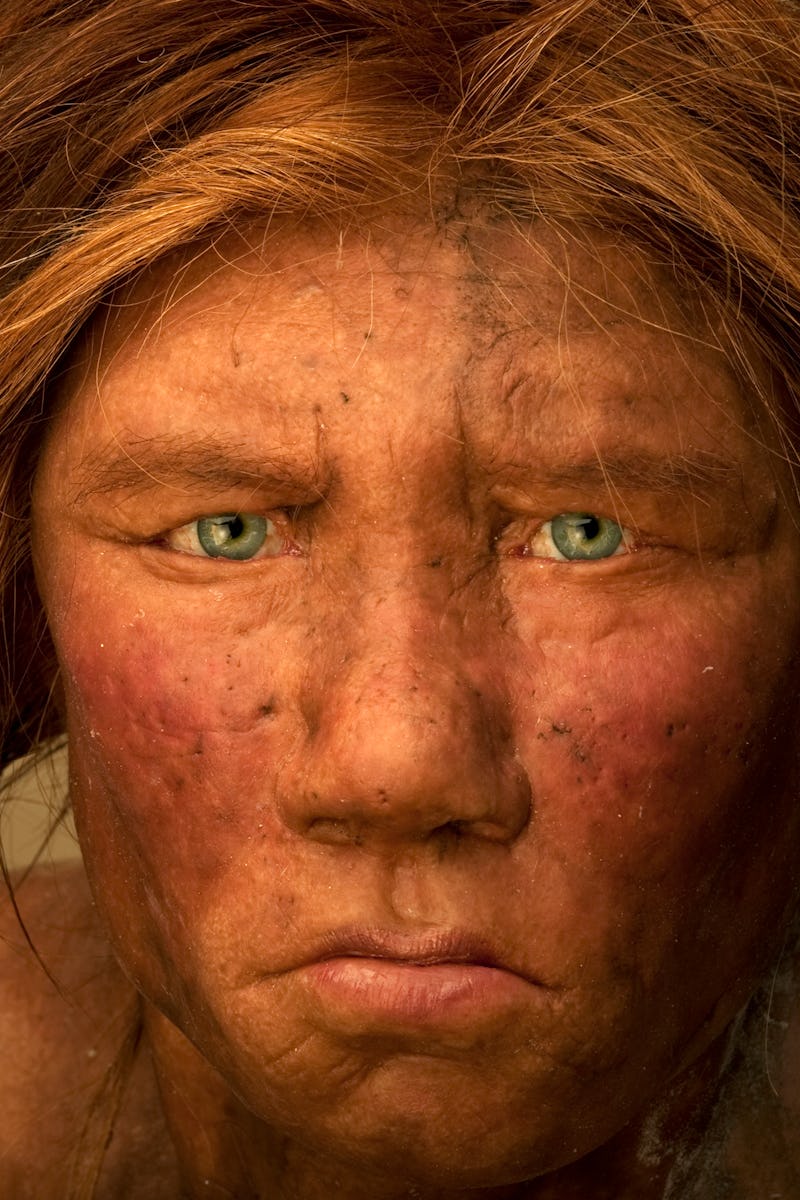
Joe McNally/Hulton Archive/Getty Images
“This research is really speaking about what [fecal data] can tell us about humanity in general.”
Neanderthal discovery reveals an important lesson for human gut health
A study earlier this year looked at fecal samples from Neanderthals, finding diverse microbiota that suggest a plant-rich diet and more health insights.
The more ancient human fossils we discover, the more we become acquainted with how similar our faces and bodies may have been — but what about on the inside? Within us humans, we know our guts play host to a diverse community of microorganisms, and Neanderthals, it turns out, were no different.
In a study published in February in the journal Communications Biology, scientists directly compared Neanderthals’ gut flora and the modern human gut microbiome.
Inverse is counting down the 20 science discoveries that made us say “WTF” in 2021. This is #18. See the full list here.
The discovery — To investigate how the gut changed over the course of human evolution, these scientists studied paleofeces from Neanderthals to reconstruct their diet and gut microbiome. These 14 separate fecal samples found at El Salt in Spain may be, according to researchers, the oldest hominin paleofeces ever identified.
Typically researchers infer much of the composition of ancient peoples’ gut microbiome by extrapolating data from modern-day human samples. This team instead extracted and analyzed ancient bacterial DNA from poop samples using a method of genetic analysis called shotgun metagenomic analysis. Altogether, the group identified 124,592,506 ancient bacterial DNA sequences.
Among those hundreds of millions of sequences, the researchers identified many of the same microbiota are thriving in modern humans’ guts today.
Neanderthal remains discovered in Spain are shedding new light on what they ate — and how we connect to them still.
Why it matters — Stephanie Schnorr, a co-author on the study and post-doctoral researcher in the University of Nevada, Las Vegas, told Inverse at the time that the research could help uncover something essential about human evolution and our relationship with our surroundings — specifically, how this relationship influenced the gut biota.
“This research is really speaking about what [fecal data] can tell us about humanity in general,” Schnorr said. “It’s speaking to something larger and greater than just the ancestors of [westernized] people. It’s thinking about humanity itself, what makes us work and what doesn’t.”
Digging into the details — Some of the microbiota Schnorr and her team discovered would have allowed Neanderthals to extract extra energy from dietary fiber, which, the researchers write, “strengthen[s] the relevance of plant foods in human evolution.”
The findings highlight two distinct but tantamount connections between the gut microbiome and human health:
- The presence of these bacteria in ancient samples suggests a symbiotic evolutionary benefit of these bacteria and human health.
- Certain bacteria present in the ancient samples are disappearing in Western people’s guts — in turn, this may be related to rising levels of certain immune conditions in Western people.
Ultimately, the results suggest these increasingly rare microbes may be critical to our health. But they also debunk one of the big misconceptions about Neanderthals and other ancient peoples: They didn’t just eat meat.
“Our agenda is to really challenge the picture that has been proposed before that Neanderthals were only eating meat,” Schnorr said.
“They were actually living in a complex environment with a complex, mixed diet.”
Inverse is counting down the 20 science discoveries that made us say “WTF” in 2021. This is #18. Read the original story here.